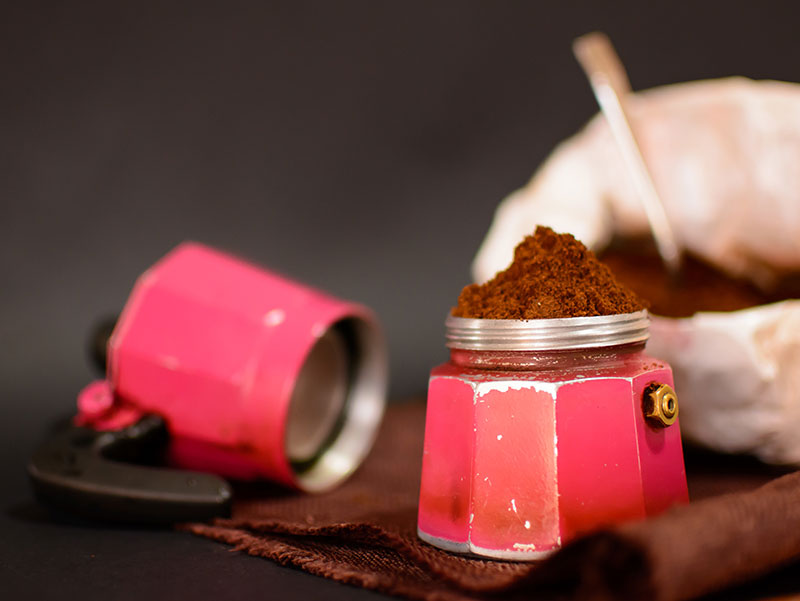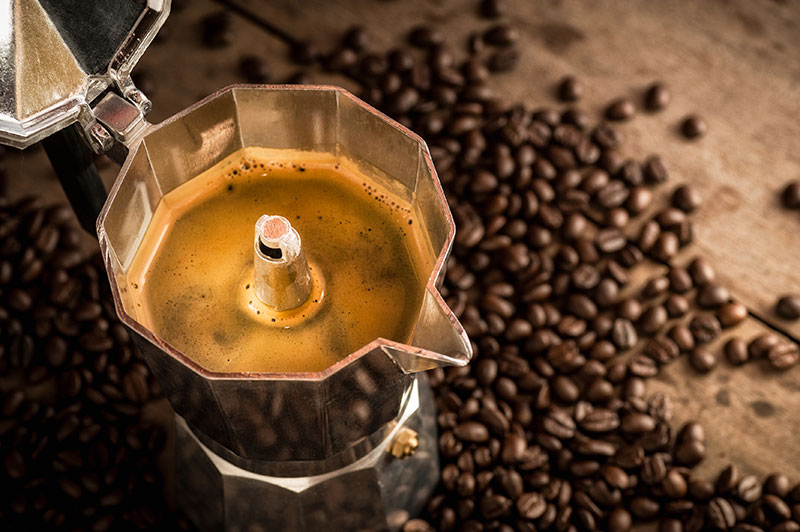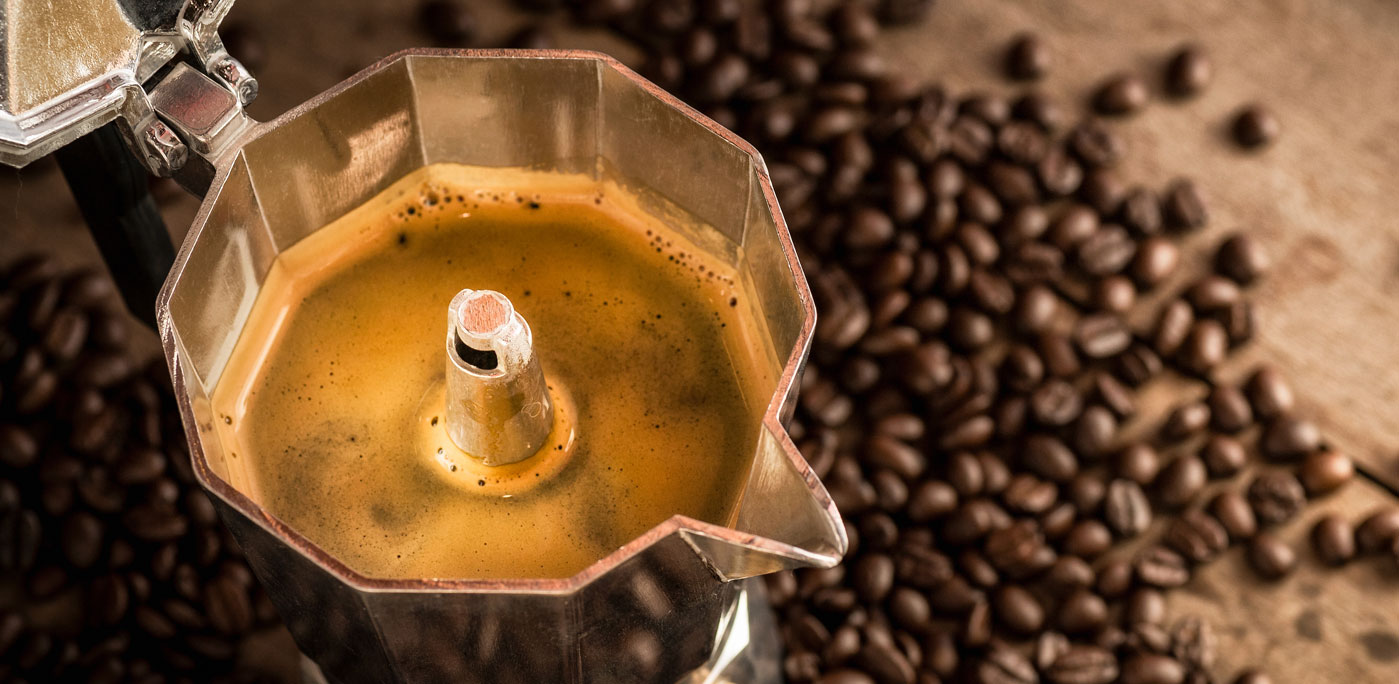Espresso Italiano tradizionale: this is the definition of the coffee Italy wants to present to UNESCO to make it part of its Intangible Heritage List. The candidature proposal was presented on the 2nd of December to the Camera dei Deputati, one of the two Chambers of the Italian Parliament, two years after the art of Naples’ pizzaiuoli made it into the UNESCO list.
The initiative has been promoted by the Consorzio di Tutela del Caffè Espresso Tradizionale, with the aim of valorizing one of Italy’s most iconic products, of which “the originality and uniqueness must be preserved,” as declared by MP Maria Chiara Gadda, representative of the Italia Viva Commissione Agricoltura in the Parliament’s lower Chamber.
When discussing the topic, Gadda underlined how Italian coffee is synonym of “socializing, a true Italian ritual known also outside our national boundaries.” And there is a lot to say also about the history of coffee drinking as we know it today, and the role of Italy in its development and diffusion.
Il caffé, a whole-Italian ritual

(Copyright Dreamstime)
Coffee, we all know it, does not hail from the Belpaese. Known since the Middle Ages by the Arabs, its culture was common in Africa and in the Middle East and it eventually made it into Europe through the Balkans, thanks to the connections between the Ottoman Empire and the West. It seems that the first Italian to try to popularize coffee in the peninsula was Prospero Alpino, a doctor from Padua who brought it back to Venice towards the end of the 16th century. In the Serenissima, caffè was as precious as gold and only the wealthy could afford it, but this didn’t slow its rise to popularity. Its bitter, well rounded flavor, its senses-tingling aroma made it a must-have, so much so specialized stores selling it began sprouting here and there around town: the step to the inauguration of the first coffee shops, or caffè, as we say in Italian, was short.
And it is here, in the association between coffee drinking and a certain type of relaxed, trendy, intellectual socializing that the first essential Italian imprinting on coffee culture must be sought. Italy made coffee a social drink, it made it a pleasure. By 1763, there were 218 caffè in Venice and even the Pope was a fan, in spite of many asking him to ban it, because of how enjoyable it was and — God Forbid — one couldn’t possibly be a good Christian and revel in such a mundane pleasure without ending up in the Devil’s snare.
It is in Italy then, that coffee became something to share with friends and loved ones, but also to savor while discussing politics, art and literature: with the coming of the 19th century, it turned into Italy’s intelligentsia’s favorite drink.
All this developed within and around i caffè, places that soon became as famous as theaters, where decisions were taken, loves were born and friendships made.

(Copyright Dreamstime)
In other words, Italy had created modern coffee culture.
Making espresso is a form of art, and it’s all Italian
Indeed, it’s an Italian who invented the first espresso machine: we are talking about Turinese Angelo Moriondo who created it in 1884: his technology was revolutionary because it allowed baristas everywhere to make endless cups of coffee, quickly. After him, other men of great inventive like Luigi Bezzera, Desiderio Pavoni, Pier Teresio Arduino and Achille Gaggia added to the technology, virtually allowing today Italian “bar” and every Starbucks in the world to exist and thrive.
So, here’s another reason why caffè espresso should be considered an Italian thing.
This is all good, but should espresso really become part of Italy’s UNESCO Intangible Heritage.
Some final considerations, inspired by a very interesting article published on the Gambero Rosso website and penned by Michele Becchi. While Italy has been the real motor behind the development of coffee culture up to the second post war period, things have been changing a lot in more recent decades.
If until the 1980s our “bar” and cafés were small, family run businesses, all focused on providing excellence and quality — along with that quintessential home feeling typical of these places — in the 1990s the focus shifted on revenue, with less and less importance placed on the quality of the product. This happened in Italy, while the rest of the world, on the other hand, started looking into making coffee with high quality machines and using high quality beans, maybe even challenging tradition a bit, but all within the canons necessary to make a fantastic brew: basically, the world embraced the original, Italian coffee making philosophy, while Italy lost proper sight of it. At least for a while.
However, Italy eventually caught up with the times, thanks to the influence and the example of other countries, which have carried on the essence of coffee culture even when we were busier churning out tazzine di caffè without thinking much of all that they meant from a cultural and culinary point of view.
Today, the figure of the barista returned to be central and the quality of the beans, as well as the way they are sourced, is paramount. The ubiquitous espresso which, for at least a couple of decades, had become something to drink quickly, almost like an automatic gesture, is again a pleasure in Italy, just as it was four centuries ago, when Prospero Alpino brought the first kava to Venice. We rediscovered the art of making and enjoying good coffee, something we, if not fully invented, certainly developed to the standards known to the world today.
This is why, I think, it would be fair to make espresso Italiano tradizionale part of Italy’s UNESCO Intangible Heritage, but not without acknowledging how the rest of the world, with its immeasurable love for coffee — and Italian style coffee in particular — helped keeping our tradition alive even when we lost our ways a little.
Let’s say that, the day caffè Italiano becomes — if it will — UNESCO heritage, we Italians should offrire un caffè to the world as a big thank you.
Espresso Italiano tradizionale: questa è la definizione del caffè che l’Italia vuole presentare all’UNESCO perché sia inserito nella sua Lista del Patrimonio Immateriale. La proposta di candidatura è stata presentata il 2 dicembre alla Camera dei Deputati, una delle due Camere del Parlamento italiano, due anni dopo che l’arte dei pizzaiuoli di Napoli è stata inserita nella lista UNESCO.
L’iniziativa è stata promossa dal Consorzio di Tutela del Caffè Espresso Tradizionale, con l’obiettivo di valorizzare uno dei prodotti più iconici d’Italia, di cui “l’originalità e l’unicità devono essere preservate”, come ha dichiarato l’onorevole Maria Chiara Gadda, rappresentante di Italia Viva in Commissione Agricoltura nella Camera bassa del Parlamento.
Nell’affrontare l’argomento, Gadda ha sottolineato come il caffè italiano sia sinonimo di “socializzazione, un vero e proprio rito italiano conosciuto anche al di fuori dei nostri confini nazionali”. E c’è molto da dire anche sulla storia del caffè come lo conosciamo oggi, e sul ruolo dell’Italia nel suo sviluppo e diffusione.
Il caffé, un rituale tutto italiano
Il caffè, lo sappiamo tutti, non proviene dal Belpaese. Conosciuto fin dal Medioevo dagli Arabi, la sua cultura era comune in Africa e in Medio Oriente e alla fine è arrivato in Europa attraverso i Balcani, grazie ai contatti tra l’Impero Ottomano e l’Occidente. Sembra che il primo italiano a cercare di diffondere il caffè nella penisola sia stato Prospero Alpino, un medico padovano che lo portò da Venezia verso la fine del XVI secolo. Nella Serenissima il caffè era prezioso come l’oro e solo i ricchi potevano permetterselo, ma questo non ne rallentò la crescita in termini di popolarità. Il suo sapore amaro e intenso, il suo aroma coinvolgente e sensoriale, ne fecero un must-have, tanto che i negozi specializzati che lo vendevano iniziarono a spuntare qua e là per la città: il passo verso l’inaugurazione dei primi caffè, come si chiamano in italiano, fu breve.
Ed è qui, nell’associazione tra bere un caffè e un certo tipo di socializzazione rilassata, alla moda, intellettuale, che va ricercato il primo essenziale imprinting italiano alla cultura del caffè. L’Italia ha fatto del caffè una bevanda sociale, lo ha reso un piacere. Nel 1763, a Venezia c’erano 218 caffè e persino il Papa ne era un fan, nonostante molti gli chiedessero di vietarlo, per quanto fosse piacevole e – Dio non voglia – non si poteva essere un buon cristiano e godersi un piacere così mondano senza finire nella trappola del Diavolo.
È in Italia, allora, che il caffè divenne qualcosa da condividere con gli amici e i propri cari, ma anche da gustare discutendo di politica, arte e letteratura: con l’avvento del XIX secolo, si trasformò nella bevanda preferita dall’intellighenzia italiana.
Tutto questo si è sviluppato all’interno e intorno ai caffè, luoghi che ben presto sono diventati famosi quanto i teatri, dove si sono prese decisioni, sono nati amori e amicizie.
In altre parole, l’Italia aveva creato la moderna cultura del caffè.
Fare l’espresso è una forma d’arte, ed è tutto italiano.
Infatti, è un italiano che ha inventato la prima macchina per caffè espresso: stiamo parlando del torinese Angelo Moriondo che la creò nel 1884: la sua tecnologia era rivoluzionaria perché permetteva ai baristi di fare infinite tazze di caffè, velocemente. Dopo di lui, altri uomini di grande inventiva come Luigi Bezzera, Desiderio Pavoni, Pier Teresio Arduino e Achille Gaggia hanno perfezionato la tecnologia, praticamente permettendo ai bar italiani di oggi e ad ogni Starbucks nel mondo, di esistere e prosperare.
Ecco quindi un altro motivo per cui il caffè espresso dovrebbe essere considerato una cosa italiana.
Fin qui tutti d’accordo, ma l’espresso dovrebbe davvero entrare a far parte del patrimonio immateriale italiano dell’UNESCO.
Alcune considerazioni finali, ispirate da un articolo molto interessante pubblicato sul sito del Gambero Rosso e scritto da Michele Becchi. Se l’Italia è stata il vero motore dello sviluppo della cultura del caffè fino al secondo dopoguerra, le cose sono molto cambiate negli ultimi decenni.
Se fino agli anni ’80 i nostri “bar” e caffè erano piccole aziende a conduzione familiare, tutte incentrate sull’eccellenza e la qualità – insieme a quella quintessenza domestica tipica di questi luoghi -, negli anni ’90 l’attenzione si è spostata sul fatturato, con sempre minore attenzione alla qualità del prodotto. Questo è accaduto in Italia, mentre il resto del mondo, ha iniziato a fare il caffè con macchine di alta qualità e con chicchi di alta gamma, magari anche un po’ sfidando la tradizione, ma restando dentro i canoni necessari per fare una fantastica miscela: in sostanza, il mondo ha abbracciato l’originale filosofia italiana del caffè, mentre l’Italia ha perso di vista se stessa. Almeno per un po’.
Ma l’Italia alla fine ha recuperato il tempo perso, grazie all’influenza e all’esempio di altri paesi, che hanno portato avanti l’essenza della cultura del caffè anche quando eravamo più occupati a sfornare tazzine di caffè senza pensare a tutto ciò che significavano dal punto di vista culturale e culinario.
Oggi, la figura del barista è tornata ad essere centrale e la qualità dei chicchi, così come il modo in cui vengono acquistati, è fondamentale. L’onnipresente espresso che, per almeno un paio di decenni, era diventato qualcosa da bere velocemente, quasi come un gesto automatico, è di nuovo un piacere in Italia, proprio come quattro secoli fa, quando Prospero Alpino portò la prima kava a Venezia. Abbiamo riscoperto l’arte di fare e gustare un buon caffè, cosa che noi, se non proprio inventata, abbiamo certamente sviluppato secondo gli standard conosciuti nel mondo di oggi.
Per questo, credo, sarebbe giusto che l’espresso Italiano tradizionale facesse parte del patrimonio immateriale italiano UNESCO, ma non senza riconoscere come il resto del mondo, con il suo incommensurabile amore per il caffè – e per il caffè all’italiana in particolare – abbia contribuito a mantenere viva la nostra tradizione anche quando noi l’abbiamo persa un po’ per strada.
Diciamo che, il giorno in cui il caffè italiano diventerà – speriamo – patrimonio dell’UNESCO, noi italiani dovremo offrire un caffè al mondo come grande ringraziamento.






























